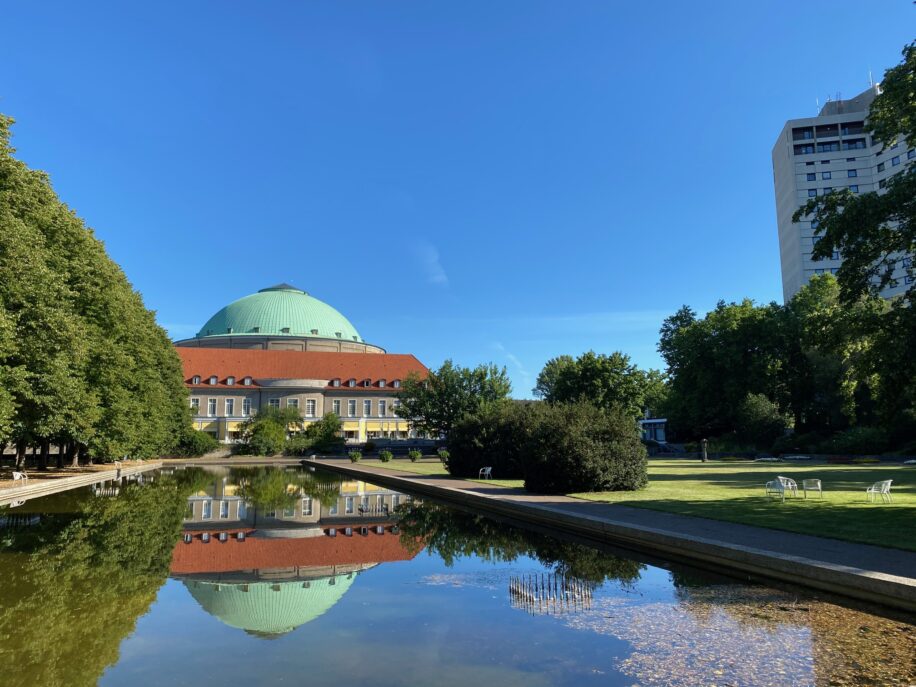 © HMTG
© HMTGHanover City Park is one of the city's most important works of garden art. With its rich history and diverse uses, it offers both locals and visitors a place of tranquillity and cultural exchange.
The origins of the city park date back to 1914, when it was laid out as the "Stadthallengarten" in connection with the former Stadthalle, now the Hannover Congress Centre (HCC). It was designed under the direction of garden director Hermann Kube in collaboration with architects Paul Bonatz and Friedrich Eugen Scholer. The grounds were officially opened in June 1914 with a music festival.
In 1933, the park served as an exhibition area for the "Annual Exhibition of German Garden Culture" and was extended accordingly. During the Second World War, the Stadtpark suffered considerable damage, but was restored in the post-war years. An important milestone was the organisation of the first Federal Garden Show in 1951, which gave the park its current appearance.
The city park is characterised by a variety of horticultural elements. These include the rose garden with pergola, the fountain garden, the perennial garden and the Japanese tea garden, which was created in 1996 as a gift from the twin city of Hiroshima.
The complex combines various garden styles of the 20th century and is the only post-war garden monument in Hanover to be listed as a historical monument.
The city park regularly serves as a venue for cultural and social events. Particularly noteworthy are the annual "Hanover Plant Days" in May, where numerous nurseries and specialised companies present their plant rarities.
The park also hosts concerts, exhibitions and other events that enrich Hanover's cultural life.
The city park is located in the Zoo district, directly adjacent to the Hannover Congress Centre. It is easily accessible by public transport, on foot or by bike. Its central location makes it a popular destination for those seeking relaxation and those interested in culture alike.
+ Read more